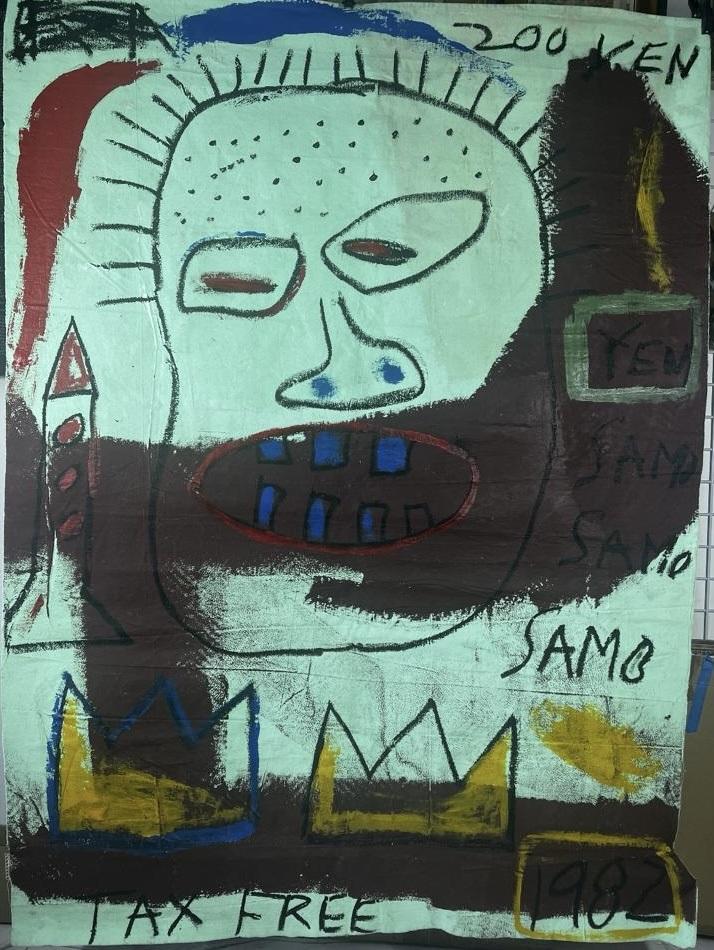New York, in 1960, Basquiat rose to fame in the 1980s and left an indelible mark with his raw, expressive style that blended graffiti, street art, and a unique fusion of cultural influences.
"Untitled" is a prime example of Basquiat's ability to channel complex themes through seemingly simple yet deeply layered compositions. Executed in 1981, the painting showcases Basquiat's characteristic use of bold colors, frenetic brushstrokes, and a combination of text and Jean-Michel Basquiat 200 Yen imagery. At first glance, the canvas appears chaotic, with its enigmatic symbols and fragmented words, but a closer look reveals a carefully orchestrated visual narrative.
The painting measures approximately 72 by 68 inches, providing a substantial and immersive experience for viewers. Basquiat's choice of a large canvas allowed him to explore the expanses of his creativity, inviting observers to delve into the intricate details that define his work. The composition features a central figure, often resembling a skull or a mask, surrounded by a dynamic interplay of symbols, words, and gestural marks.
Basquiat's use of symbolism in "Untitled" is both personal and culturally resonant. The skull motif, a recurring element in his body of work, is a potent symbol that transcends its literal representation. It serves as a memento mori, reminding viewers of the fragility and transience of life. Simultaneously, the skull becomes a metaphorical vessel for deeper explorations of identity, race, and the human condition.
Text plays a pivotal role in Basquiat's art, and "Untitled" is no exception. Scrawled words and phrases, often fragmented and cryptic, populate the canvas, adding layers of meaning to the visual narrative. Basquiat drew inspiration from diverse sources, including his Haitian and Puerto Rican heritage, African American history, and the socio-political issues of his time. The inclusion of words like "crown," "hero," and "graffiti" invites viewers to contemplate themes of power, heroism, and the intersection of high and low culture.
Basquiat's unique approach to art can be traced back to his roots in graffiti and street art. Before gaining recognition in the fine art world, he was part of the street art duo SAMO©, where he expressed socio-political commentary through graffiti in the Lower East Side of Manhattan. The energy and immediacy of street art permeate "Untitled," as Basquiat seamlessly merges the rawness of his street roots with the sophistication of fine art.
Beyond its visual impact, "Untitled" serves as a time capsule, encapsulating the spirit of the 1980s New York art scene. Basquiat was a prominent figure in the Neo-expressionist movement, and his collaborations with artists like Andy Warhol further cemented his influence. The painting reflects the cultural zeitgeist of its era, capturing the frenetic energy, cultural diversity, and socio-political tensions that defined 1980s America.
"Untitled" also raises questions about the commodification of art and the role of the artist in society. Basquiat's rapid rise to fame led to a complex relationship with the art market, and his work often challenged traditional notions of artistic authorship and value. The painting's title, or lack thereof, adds to its enigmatic allure, emphasizing Basquiat's resistance to easy categorization and interpretation.
In 2022, "Untitled" continues to captivate audiences worldwide, with its presence in prestigious collections and museums. Its enduring relevance speaks to the timeless themes explored by Basquiat and his ability to transcend the boundaries of his era. As a pivotal work in the artist's oeuvre, "Untitled" invites viewers to engage with the complexities of contemporary art, challenging them to look beyond the surface and explore the rich tapestry of meanings woven into Basquiat's iconic masterpiece.
